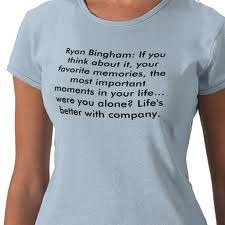I’ve been thinking a lot lately about the power of language. Sure, there have been a lot of news relating to language (election, after all, is only a few months away): legitimate rape is one example of powerful words/phrases in the news. But I would like to briefly explore how words and language can influence the design and use of a product.
Language Development
It might be interesting to start really early (or to look to unusual cases of individuals without language). The following program by RadioLab does a wonderful job of introducing language and the development of comprehension: Words that Change the World.
This half-hour audio show presents the work of Susan Schaller, Charles Fernyhough, Elizabeth Spelke, and James Shapiro. Susan describes a case of a deaf 27 year old man who was never taught language and his journey to comprehension. Charles describes an experiment where babies, kids, and rats are asked to find items in a blank room after a brief disorientation. He discovers that language is essential to linking concepts in our brain. Elizabeth explores the benefits of language farther. And James, a Shakespeare scholar at Columbia University, talks about the use of language to communicate complex and unique ideas — something that Shakespeare excelled. Did you know that Shakespeare is responsible for such words/concepts as uncultured, eyeball, dumb as a door nail? He was a master wordsmith and language creator.
Words That Change Minds
Shelle Rose Charvet wrote Words That Change Minds: Mastering the Language of Influence. In the book, Shelle spent time identifying personality-like profiles of individuals based on their conversational styles — the types of language that individuals used in certain settings and found persuasive. When products and marketing materials are carefully tailored to the discourse style of their users, they are much more effective.
[You can buy a copy of second edition of Shelle Rose Charvet’s book from Amazon. Or check out her website: http://www.successtrategies.com/. Shelle Rose Charvet also published a few articles, you can view them here.]In particular, Shelle described the Proactive/Reactive behaviors and the conversational styles that emerge from them.
Proactive Pattern of Discourse includes the following:
- Direct conversational style (see Interfaces.com book for definition)
- Short sentences which deliver a burst of content: active verbs, nouns
- Impatient body language — tapping, fidgeting
- Speaking out of turn and over the other people in conversation
- Showing signs of impatience
- Projecting power and control
Reactive Pattern of Discourse includes the following:
- Long and indirect sentences
- Speaking in incomplete sentences — sentences without subject or verbs
- Providing lots of examples and analogies
- Using words like: might, could, would
- Belief in little control over the situation/life
- Being very cautious and looking for failure
- Preferring long discussions and planning sessions
 Shelle gives the following examples of proactive speech:
Shelle gives the following examples of proactive speech:
- “Go for it”
- “Take initiative”
- “Let’s hurry”
- “Right away”
- “Now”
- “Just do it”
 And these examples for reactive speech:
And these examples for reactive speech:
- “Let’s think about it”
- “Consider this” and “You might consider this”
- “Now that you have analyzed it”
- “Think about your response”
- “This will tell you why”
The book continues with many examples from hiring interviews and marketing materials using these different styles. The main point is that people respond better when the information is delivered in the style they are most comfortable with using. Although, Shelle is very careful to say that people can change their discourse preference over a life time as well as over multiple contexts (e.g. the linguistic style adapted at work might be different from one used during a cocktail party). But it is easy to see how different the materials would be if targeted towards an extreme proactive group as opposed to a reactive one.
Personally, I’m very strongly in the proactive group. The “wish-washy” language of the reactive style would make me very uncomfortable in a design meeting. But I also can’t stand the midnight informercials that scream: “buy now!”
Product Design
Imagine a manual written in reactive speak for a product designed for a proactive audience — they would hate it! Consider marketing materials, PR stories, web articles, blogs, etc. — all written in a style counter to their users’ linguistic preference. Users might not be able to identify why, but they would start out being irritated with the design. With a little bit of research, product designers can improve communication with their users. And I guess that’s the moral of this blog.
